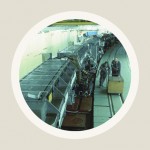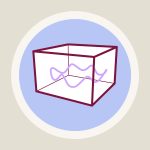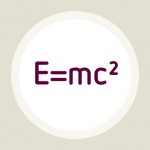Dictionary
synchrotron radiation
Electromagnetic radiation produced when electrically charged particles (for instance, electrons) are made to follow a curved trajectory in a particle accelerator, or when these particles undergo comparable accelerations in nature.
Due to effects that can be derived from special relativity, synchrotron radiation is densely concentrated and very intense. These properties, together with the fact that it is very easy to produce synchrotron radiation with a clearly defined frequency, make this type of radiation a valuable tool for research not only in basic physics, but also in biology and medicine.
When it was first discovered, synchrotron radiation was an (annoying!) side effect, observable at particle accelerators which were used for research into the basic properties of elementary particles. Nowadays, there are many accelerators whose main purposes is the production of this radiation!
For a list of important European Synchrotrons, have a look at > FIS-Landschaft, with BESSY II, PETRA III or the ESRF.
In the US, you can find the > National Synchrotron Light Source II at the Brookhaven National Laboratory










